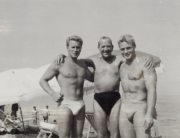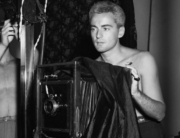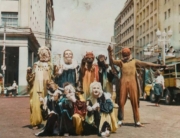America and Europe approach the past differently, and each can defy common sense in ways that make sensible people want to rip their hair out. European culture can overprotect tradition like a helicopter mom, while America blithely bulldozes beloved institutions. Where is the center?
A restless craving for a middle ground between European and American approaches may arise in Johannes Holzhausen’s The Great Museum. Beautifully shot and composed, the film reveals the inner workings of Vienna’s venerable Kunsthistorisches Museum, an 1891 creation of the once-mighty Austro-Hungarian Empire and an exalted institution secure in history and culture. Anyone given to comparing Old and New Worlds will be struck by the contrast this august crown jewel makes to the youth-chasing, pop-culture-mining, corporate-shilling American museums of today.
A few examples: U.S. museums scramble to innovate, but the Kunsthistorisches hasn’t even installed an elevator to transport precious artworks, and its creative director is satisfied that its newly redesigned logo is “not flashy.” American museums fetishize interactivity, but the Kunsthistorisches—and the film—invite you to simply gaze at the gallery’s endless, lavish halls of barouches, bibelots, silverware, statuary, armor, uniforms, portraits, music boxes, ceramics, and sarcophagi in awe. Pandering versus borderline elitism: Which is better?
Esthetes and lovers of cinematography may not even bother with such questions, as they may be simply carried away by the museum’s opulence and the stately beauty of the camerawork. And viewers are getting a peek at an auspicious moment. The Great Museum records a historic reopening of the famed Kunstkammer galleries, complete with pomp, press, and a visit from Austria’s president. Rooms are specially reworked to reflect the art they showcase, an idea that sinks in when a worker plunges a pickax into a gorgeous hardwood floor. It’s hard not to admire the objects, the luxury, and the artistry with which these refined elements are captured.
Away from the glitz, the documentary instills even the mundane with a sense of purpose and magic. Custodians unroll carpet in synchronicity. Restorers locate flaws in a Hapsburg portrait with scientific precision. Close inspection of artworks yields insects, meticulously removed and inventoried. A young art restorer bathed in diffuse light forms a picture of unwavering concentration and a gorgeous throwback to Vermeer. Even in activity, the mood is hushed, reverent. The museum evokes a church of beauty and refinement with its own rituals.
However, the film uses no voice-over and does not identify people or objects (some of them quite famous, such as the Cellini Salt Cellar) until the end credits. To some viewers, this hands-off technique may be refreshing, to others simply high-handed. It can make events taking place on screen hard to understand.
Furthermore, the museum leadership talks a lot about contemporary relevance, but the Kunsthistorisches seems very bound up in a Hapsburg past. Formality, even starchiness, stalks the hallowed space. Exchanges between curators and officials sometimes play out like unwitting satires of art world toffs. One hard-edged executive repeatedly admonishes a designer over her rendition of the number three because it “looks aggressive.” Invited to speak her mind, a guide haltingly tries to express unhappiness about her group’s low place in the museum hierarchy, but she never gets an answer to the issues she raises. America likes to feel free to be you and me, or at least pretends it does. Vienna barely bothers, and when it tries one feels a slight chill.
Perhaps diversity is an American preoccupation that has little room in a rarefied European art stronghold, but one can hardly avoid noticing that the museum’s large staff is about 100 percent white. I counted one non-white person in the whole movie. We see very little of the public’s response to the museum, so we have no way of knowing who it attracts. For racially conscious Americans, the all-white factor may be a large elephant in the room.
But these objections only underscore the big distances that separate the United States from Europe. The American egalitarian ethic has seeped into cultural life, sometimes enriching it, sometimes dumbing it down. Vienna’s Kunsthistorisches wants very little of that agenda and unapologetically values preservation, scholarship, and history. The museum demands that beauty be worshipped. In today’s world, that’s a startling notion—even a radical one.






Leave A Comment